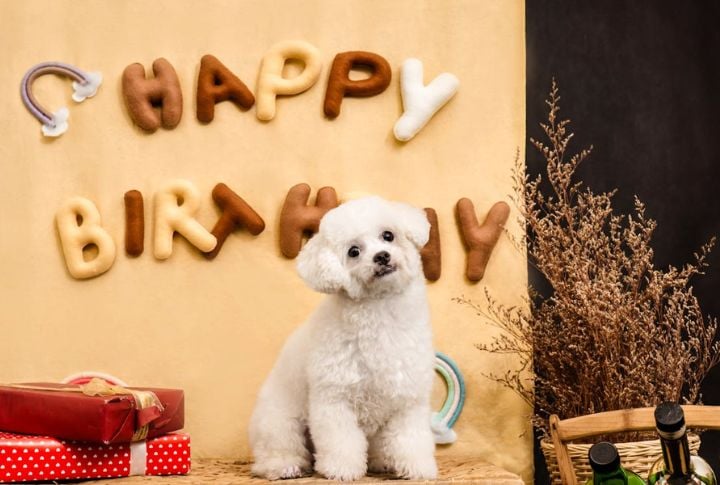10 Reasons Why Early Socialization Is The Key To A Thriving Dog

You don’t raise a well-balanced dog with treats—you raise one with timing. Miss the window, miswire the brain. These ten lessons pull back the curtain on early socialization’s invisible grip, explaining what your dog needs before instincts take over.
Confidence Starts At The Leash

Ears perk and tail wags slow—watchful eyes track each step. Early encounters teach that unfamiliarity isn’t unsafe. Leashed introductions to gentle stimuli develop composure. That calm baseline shapes a dog who approaches challenges with boldness, not fear.
Better Reactions To Strangers

A delivery person knocks. Barking erupts. Without social exposure, unfamiliar people trigger alarm. Dogs interpret new humans as threats. Early greetings in relaxed settings teach that strangers bring no harm. Friendly engagement replaces suspicion, reducing barking, lunging, and other retreat behaviors.
Less Stress At The Vet Or Groomer

Calm behavior stems from early trust, not force. Many dogs fight vet visits because they’ve never rehearsed the script. Simulated exams or nail touches restraint during puppyhood lower resistance. They learn to stay still. They learn that nothing bad follows simple contact.
Safe Play With Other Dogs

Early socialization teaches puppies to approach with calmness. A pause before contact signals good manners. Bite inhibition forms through trial or correction. So, dogs raised by respectful peers develop smoother body language to make public outings less stressful for both pets and handlers.
Mastering Body Language Communication

Tail wags mean happiness, right? Not always. Many dogs misread social cues without peer interaction. Supervised playtime reveals the truth behind posture, growls, or submission. Dogs who are fluent in body language communicate their needs clearly for cordial social exchanges.
Prevent Future Aggression

Dogs aren’t born reactive—they become that way through missed chances. When young pups lack exposure to boundaries, their corrections turn harsh. They learn to read the room and back off when necessary. Those moments rewire how conflict is handled later.
Create Positive Associations Early On

Let sniffing hands, soft praise, or any gentle rewards follow each new experience. Reinforce calm behavior through consistency. Remember that treats and touch paired with novelties build trust. Over time, dogs associate change with safety, which shapes a mindset that welcomes (not resists) the unexpected.
Encourage Curiosity Without Chaos

Young dogs are blank canvases, but without direction, splashes turn to spills. Early exposure paints structure into every step, and a controlled leash becomes the brush. New scents allow curiosity to grow deliberately. What starts as instinct gets shaped into thoughtful engagement with the world.
Develop Pack Manners And Etiquette

One bow, one pause, one shift in posture. That’s all it takes. Puppies watch, and they learn. They follow cues, not commands because in the company of steady dogs, wild energy softens and manners form. Over time, group life becomes second nature.
Reduce Fear Of The Unknown

Puppies absorb experiences like sponges, but without early input, fear can fill the gaps. Introducing gentle touch from strangers, new objects or spaces teaches a young dog what not to fear. This mental map of safety prevents panic in adulthood when life throws curveballs.
Accelerate Cognitive Growth

Neuroplasticity in puppies peaks between 3 and 14 weeks. So, diverse social stimuli during this stage stimulate hippocampal development, which enhances adaptive problem-solving but delays narrow neural pathways. In simple terms: socialize early, and you will build a brain that’s wired for confidence and curiosity.
Make Travel Less Traumatic

Nothing wrecks a road trip faster than a trembling furball wedged under the seat. But when their childhood includes short drives and new scenery, they grow motion-savvy. That nervous pacing? Gone. Instead, you get a window-surfing, breeze-sniffing co-pilot who actually enjoys the ride.
Teach Boundaries Without Punishment

Ever watched a puppy plow into another dog’s space and get a grumble in return? That’s social education in real-time. Through play, they learn limits—no yelling is required. Early socialization lets peers teach what’s too much, saving you from being the constant referee.
Build Impulse Control Early

Impulse control isn’t automatic; it’s learned. Early social setups challenge dogs to wait and observe. Watching a more experienced dog sit before getting a treat or turn away when overstimulated provides a blueprint. Socialization teaches patience in action, not just obedience in theory.
Raise A Dog Who Doesn’t Freak At Firework

“Oh no, not the 4th of July again.”, said every dog owner with a shaking pup at the sound of fireworks. But here’s the trick: expose them early to low-level booms and crackles, and that terrifying pop becomes background noise. It makes them less scary to these canines.






